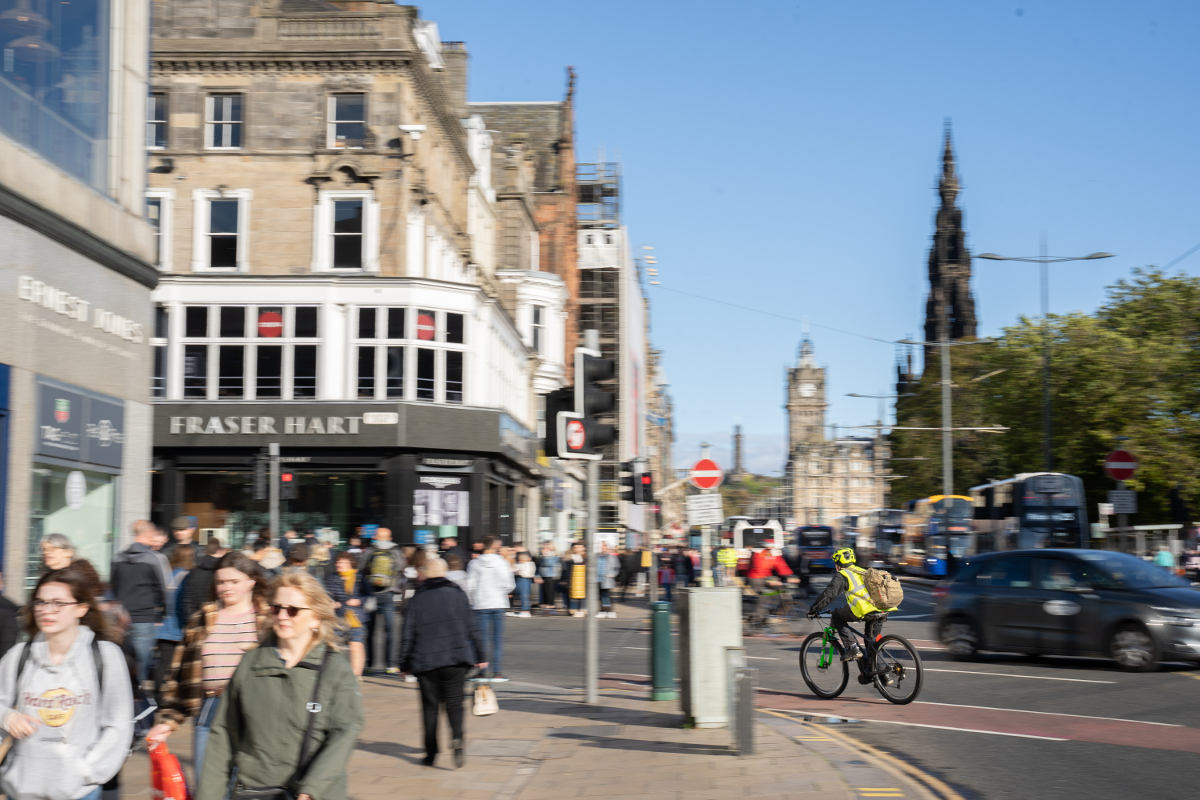Blog: Proposed Highway Code changes simply ‘tinker at the edges’

Brenda Mitchell and Jodi Gordon say that proposed changes to the Highway Code are simply tinkering at the edges given the recent road casualty figures.
We’ve all been told to cycle and walk more as part of the government’s drive to tackle obesity and improve the general health of the nation. However, the fundamental problem is that people will not engage if they do not feel safe and such fears regarding their safety are justified.
The provisional figures for 2019 road traffic casualties in Scotland released at the end of July show a worrying trend. Whilst the overall number of casualties (7594) was down by 10 per cent, the number of fatal incidents actually increased by 7 to 168 and the number of serious injuries by over 400 to 2001. Looking at the figures even more closely based on the different classes of road user, there was a significant rise in the death and serious injury of vulnerable road users. Pedestrian fatalities (46) were up 13 from the 2018 figures and cyclists seriously injured on our roads were up by 22 on the previous year to 178. Aside from the fatalities, there were another 1197 pedestrians injured.
Road traffic deaths are preventable with one life lost on our roads being one too many. If there were 168 avoidable deaths and 7426 other injuries on our roads, why is there no immediate call to action? For example, in 2018, there were 1417 people treated in hospital for dog attack related injuries. As a result of this high number, the Scottish government set up a committee to review the legislation with the Convener, Jenny Marra, stating; “The serious impact of such attacks on individuals and their families demonstrates the need for effective legislation in this field.” Without changes to the law, it is difficult to get consistency from the Courts when it comes to civil proofs.
Consider the case of Jackson v Murray [2015] UKSC 5. In 2004, Jackson, a 13-year-old schoolgirl, stepped out from behind a school minibus and into the path of an oncoming car. Due to the current legal framework, Lord Boyd, who was the Judge at first instance, was able to find Miss Jackson 90 per cent responsible for the collision. Not only was she a pedestrian but she was also a child and she deserved certain protections under civil law. How can a child pedestrian be more to blame than a driver? This case went through the three tier Scottish Court system before the final decision of a 50-50 split on liability was reached some 11 years after Miss Jackson had been injured. By the time of settlement, she was no longer a child but a young woman. With legislative changes to protect vulnerable road users, Miss Jackson would not have had to wait over a decade to receive her damages.
The UK government recently announced a consultation seeking views on proposed changes to the Highway Code to improve safety for vulnerable road users, particularly cyclists, pedestrians and horse-riders. The main alterations involve creating a hierarchy of road users to ensure that those who can do the greatest harm have the greatest responsibility to reduce the danger they pose; clarification on pedestrian priority on pavements and advising that drivers and riders should give way to pedestrians crossing or waiting to cross the road; guidance on cyclist priority at junctions and establishing safe passing distances when overtaking cyclists and horse-riders.
Such changes are welcome and long overdue, but do they go far enough? The creation of a hierarchy with pedestrians at the top is a positive step forward but such tinkering with the Highway Code is a wasted opportunity unless there is appropriate legislation sitting alongside.
Why is it that we are so hesitant to follow our European neighbours in protecting our most vulnerable road users, pedestrians? We will never increase safe active travel until the Scottish government is brave enough to leave Westminster in its path and wake up to the reality of the statistics. The leap forward we need is presumed liability and the hierarchy the proposed updates to the Highway Code have highlighted. Pedestrians are the most vulnerable of all road users and need most protection. Along with cyclists, it’s all about safe active travel.
Brenda Mitchell and Jodi Gordon are both partners at Pedestrian Law Scotland







